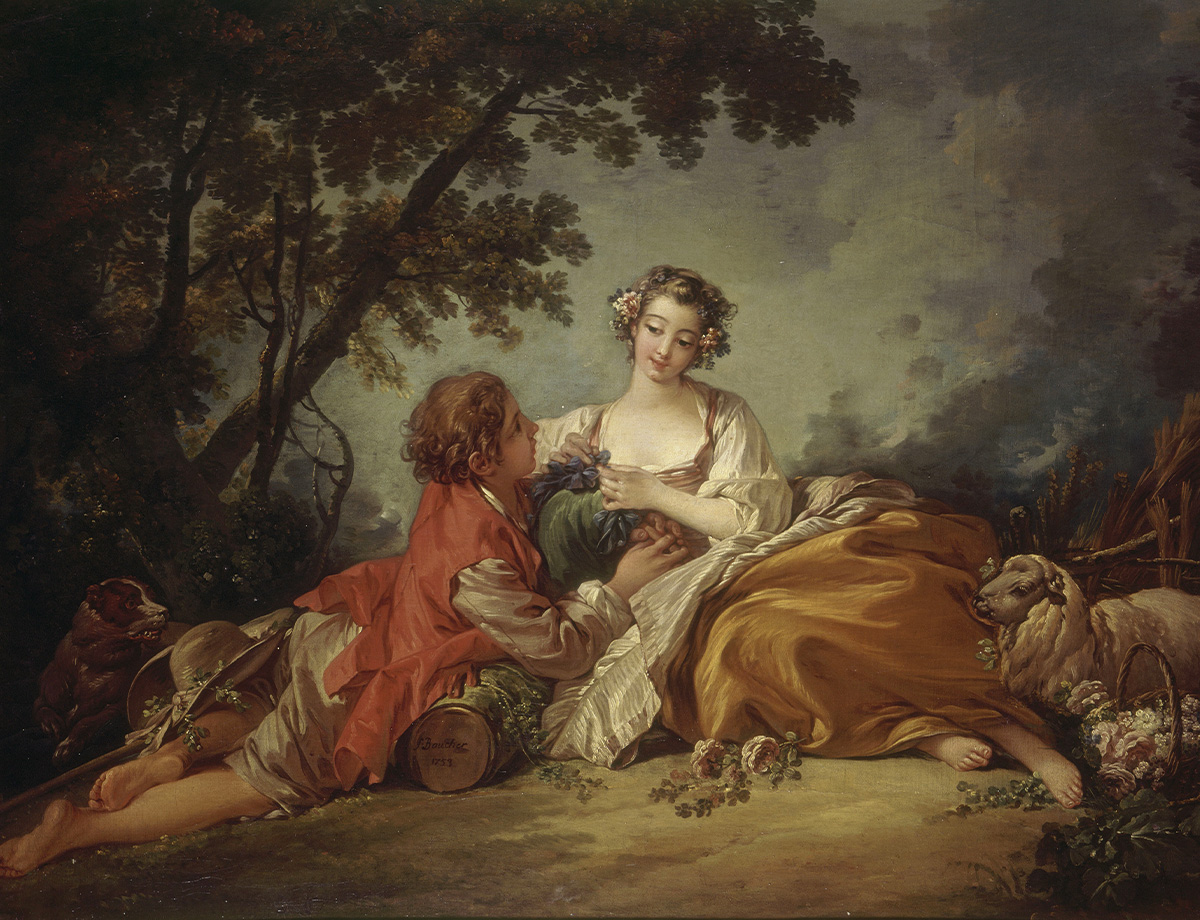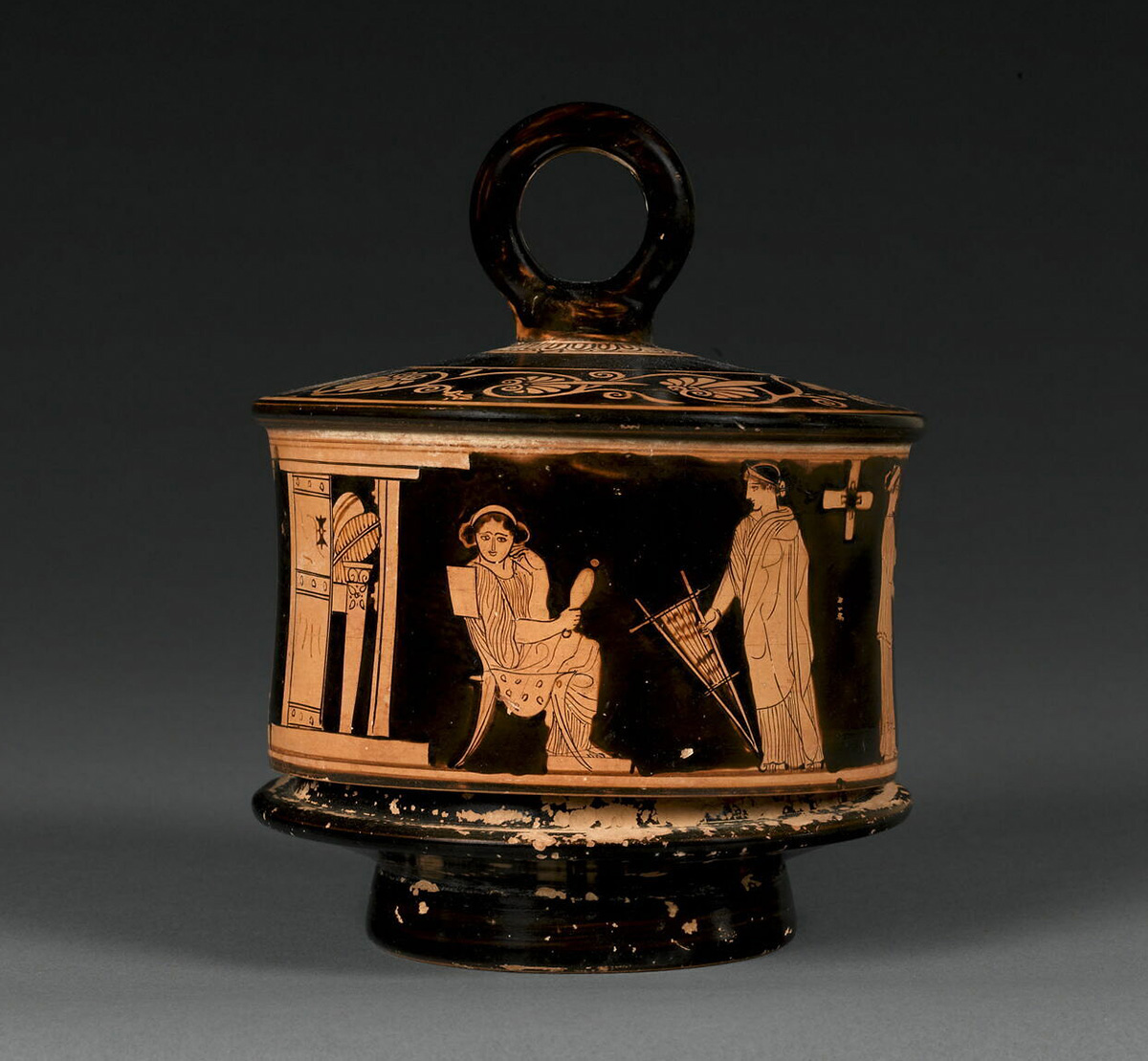
Leonardo da Vinci, Mona Lisa,
1503–1519, oil on wood, 80 x 53 cm, Louvre Museum, Paris. Photo © RMN-Grand Palais (Louvre Museum)/Michel Urtado

The Carters (Beyoncé & Jay-Z), Apeshit (image taken from the music video),
2018
Who are the women depicted in the works, or the “models”, as we call them?
First of all, they could be the patron of the work, therefore belonging to the wealthiest sectors of society. This is the case, for example, with the famous Mona Lisa.
The identity of the model has been debated at length, but it is very probably Lisa del Giocondo, the wife of a wealthy Florentine cloth merchant.
She is so popular today that she appears as a guest star in a Jay-Z and Beyoncé music video.
When not working on a commission, artists often made do with the models they had to hand… their nearest and dearest!
Professional models were first used in private studios, and then in painting academies, where life drawing sessions would take place.
To paint this picture, Corot called upon Emma Dobigny, a renowned professional model who had already posed for other painters such as Edgar Degas and Édouard Manet!
In any case, “model” does not necessarily mean “passive” – some became genuine advisers, at a time when the artist was usually alone in front of their canvas. An outside perspective is welcome sometimes!


The models who posed for works may have been the patrons themselves, people close to the artist, or professional models.
A bit like the National Museum of Fine Arts in Algiers, which lacked works by Algerian artists, the majority of museums lack works by women artists… even today!
In France in 2021, works of art produced by women represented only 4% of the total in museum collections.
And in 2012, the activist group Guerrilla Girls highlighted that less than 4% of artists in the Modern and Contemporary Art department at The Metropolitan Museum of Art in New York are women… while women represent 76% of the nudes on display!
Why such a high proportion of female nudes? Well, for a very long time male artists (for whom it was easier to be a professional artist than it was for women) produced works for male patrons. And these patrons’ tastes leaned more towards female subjects, often with a touch of eroticism.


In museum collections, there are few works by female artists but many works depicting women.
Indeed, they have been little studied over the decades – all the focus was on “great men”!
Today, though, we’re looking for traces of them in history. They’re sometimes faint, but they reveal:

Today, historians are working to uncover and write the history of women.
Even when you leave home, it’s still possible to hide… behind your clothes! Clothing norms can be influenced by societal expectations, particularly affecting women. For instance, many cultures throughout history have advocated for covering certain parts of the body.
This can involve covering the head. There are various reasons and meanings associated with this practice. Generally, the veil is seen as a symbol of modesty, reservation, and privacy.

In numerous cultures, it is also recommended to cover one’s legs. In 18th century France, for instance, it was highly frowned upon to show one’s ankles.
Paintings like those by Boucher depicting a young woman’s ankles were considered… erotic!
Of course, clothing norms towards women reflect specific eras and contexts. They evolve and vary depending on cultures, time periods, and individuals.

Across many cultures, clothing norms reflect cultural expectations placed upon women.
Western artworks depicting women in harems rely heavily on Orientalism.
Orientalism refers to representations of the East in Western art that were often exoticised and fictionalised.
These artworks frequently exhibit an erotic nature, depicting naked women in sensual poses or adorned with gold jewellery, in opulently decorated rooms. Many of these representations were purely products of the artist’s imagination.
This style of art was particularly popular in the 19th century, following the expansion of European empires and colonial rule. While highly appreciated by patrons fascinated by the exotic, it did not accurately portray the diverse realities of women’s experiences in Mediterranean harems.

Western artists often created Orientalist depictions of the harem, exoticising and fictionalising the space and the women represented.
“Harems” or “serails” are another example of the segregation of space based on gender. A harem was, above all, a private communal living space for wives, concubines and enslaved women.
The nature and level of restrictions within harems varied greatly depending on the specific culture and historical context. They were found in many different cultures with various religious beliefs throughout the Mediterranean.
In the most famous of them all, that of the Sultan of the Ottoman Empire, the women had a privileged role. Some of them even held the reins of government!

The “Magnificent Century” TV shows portrays the sultana Kösem, who, arriving as an enslaved woman in the harem, ruled the Ottoman Empire on behalf of her sons in the 17th century.
Traditional harems have been in decline since the 19th century and in most countries outlawed.
Harems were sometimes enclosed by moucharabies.
While controlling light and regulating airflow, amongst other functions, these finely crafted lattices also allowed women to see out without being seen.

Women have often been restricted to domestic space, as shown by the historical example of harems.
This idea that women should stay at home while men are meant for public spaces often appears in the writings of ancient Greek authors. Menander even wrote that “an honest woman should stay at home; the street is for nothing women (prostitutes)”.
Fortunately, in ancient Greece, women were free to move about, even though Menander may have wished otherwise. But they had limited rights in comparison to men when it came to participating in public gatherings and political assemblies.
Indeed, women across different cultures and time periods have frequently faced limitations in accessing public spaces.
For instance, in ancient Rome, women could attend games at the Forum, but they generally had to sit at the back of the amphitheatre, with the children or enslaved people.


Women’s access to public space has been restricted across different cultures and time periods.
Works of art are proof that our societies change…
So it’s not unusual to see a man adorned with jewellery or a woman wearing trousers on the wall of a museum.
Clichés, however, die hard and can lead to major mistakes.
If an archaeologist finds jewellery in a tomb, for example, should they infer that it is a woman’s tomb? As we’ve just seen, it isn’t as straightforward as that!

To write history, the evolution of norms around femininity must be taken into account.

"*" indicates required fields